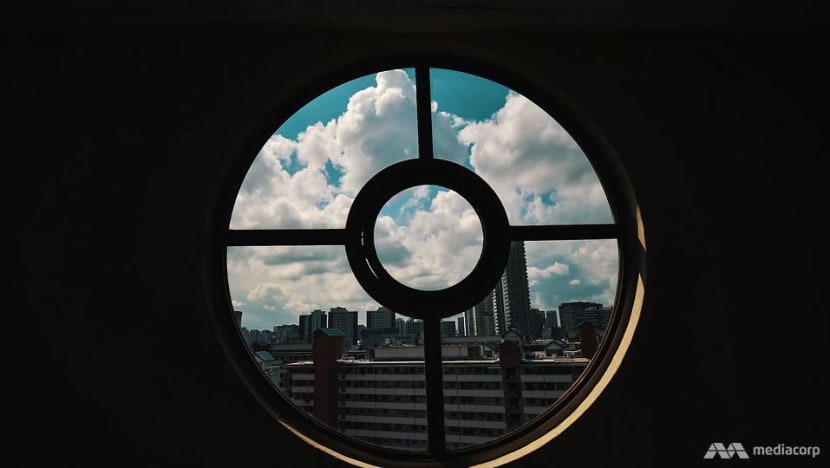From the occult to a derelict pool: 12 things about Golden Mile Complex you didn’t know
There’s more to this CBD landmark than its seedy reputation, gaudy discos and Thai restaurants - where a community of Singaporeans and Thai nationals thrive, and Instagrammers trespass to capture that perfect selfie.
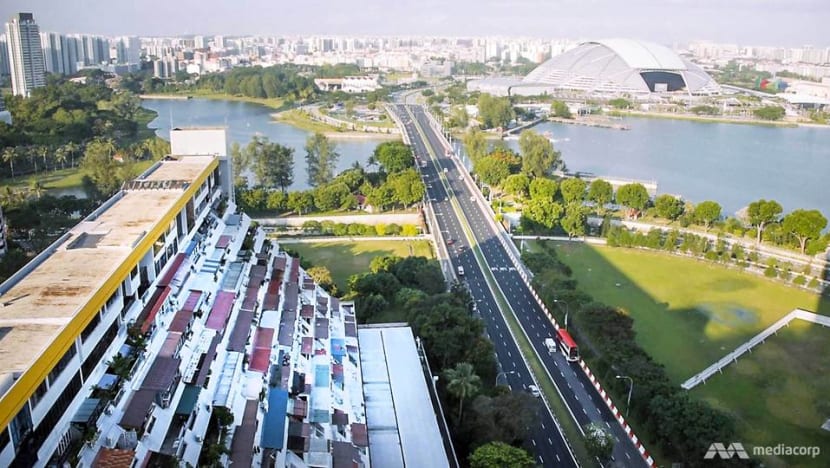
Golden Mile Complex was completed in 1973 and touted as offering an "uninterrupted panoramic view of the seafront and surrounding Southern Islands” and “luxury apartments”. (Photos & Video: Corine Tiah, Marcus Ramos, Lam Shushan)
SINGAPORE: As kids, Ritz Ang and his friends used to freely roam the long, open corridors of Golden Mile Complex, playing police-and-thief or hide-and-seek in the many nooks and crannies.
But there’s one particular corner on the fifth floor – purportedly haunted – that is deemed off-limits even now. The fourth to the ninth floors are where the offices are, occupied by the likes of small accounting, law, shipping, architecture and secretarial firms.
“It’s eerie. Whoever dares hide there would win the game immediately. To this day I try to avoid that area,” he said, shuddering. “It’s quite dark there. It’s scary. For some reason, daylight somehow just doesn’t reach that area.”
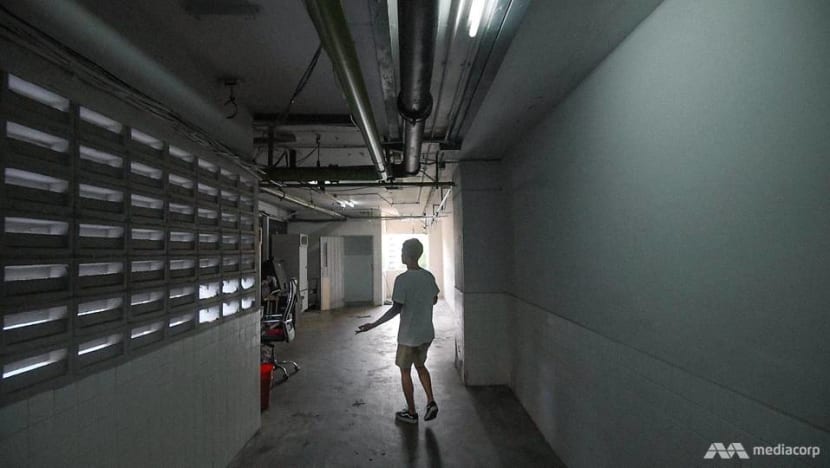
And it’s not just the young musician who has lived in the building all his 27 years. Other occupants too warned the CNA Insider team of this quiet and largely deserted corner.
But few others from the outside world know about this part of Golden Mile Complex, familiar as they are only with the tour bus companies, the Thai supermarket, the restaurants and clubs on the four retail floors downstairs.
The building – which has become the subject of a conservation debate ever since the news in August that it would go on en bloc sale – holds plenty of little-known nuggets. Here are some of them, as shared by residents and tenants
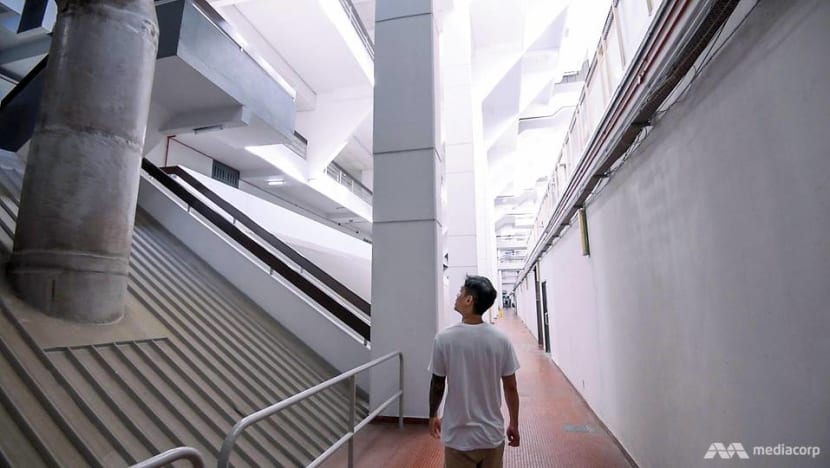
1. IT HAS AN ABANDONED SWIMMING POOL
On the fifth floor is a swimming pool, about a third the size of an Olympic pool, that holds some of Mr Ang’s fondest memories.
He recalls spending many weekends down by the pool with his family and friends. Unknown to most outsiders, it was open only to residents.
“When the swimming pool was up and running, it was quite fun. We’d have barbeques there,” he said. “I felt like that’s how the neighbours got to know each other. We grew up being friends like that, and I still keep in touch with them today.”
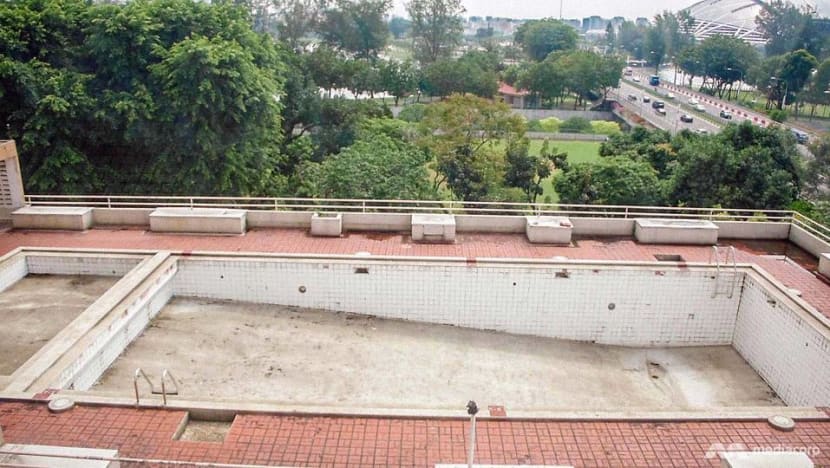
The pool overlooks the Kallang River, and there was even a mama shop (a small provision shop) next to it where he occasionally bought sweets, biscuits and toys. It was closed when the pool was drained about 15 years ago.
According to another resident Mr Ponno Kalastree, the pool was under-utilised and expensive to maintain. After it was emptied, the residents’ monthly maintenance fees were cut, he said.
“I was sad (when the pool was closed), and I couldn’t do anything about it,” said Mr Ang. “It’s all locked up now. I wish it could still be accessed.”
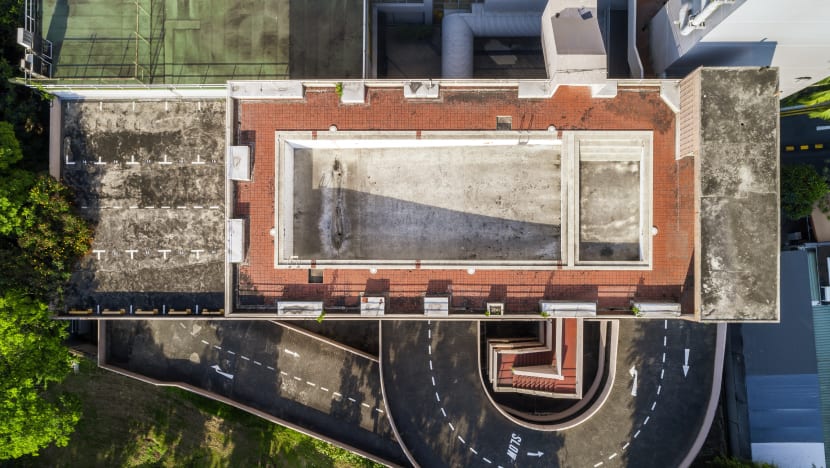
2. RESIDENTS HAD FRONT-ROW SEATS TO HISTORY
Completed in 1973, the complex boasted an “uninterrupted panoramic view of the seafront and surrounding Southern Islands” and “luxury apartments”.
The unique stepped-terrace design that holds 68 apartments, from the tenth to the sixteenth floors, is a familiar sight from Nicoll Highway. And from the balcony of his home on the thirteenth floor, Mr Ang can see from Kallang Basin and the sea off East Coast Park all the way to the Marina bayfront and beyond.
This means he has had a ringside view to many key national events and transformations – from the fireworks every National Day, to a skyline altered by Gardens by The Bay, the Marina Bay Sands and the F1 Pit building.
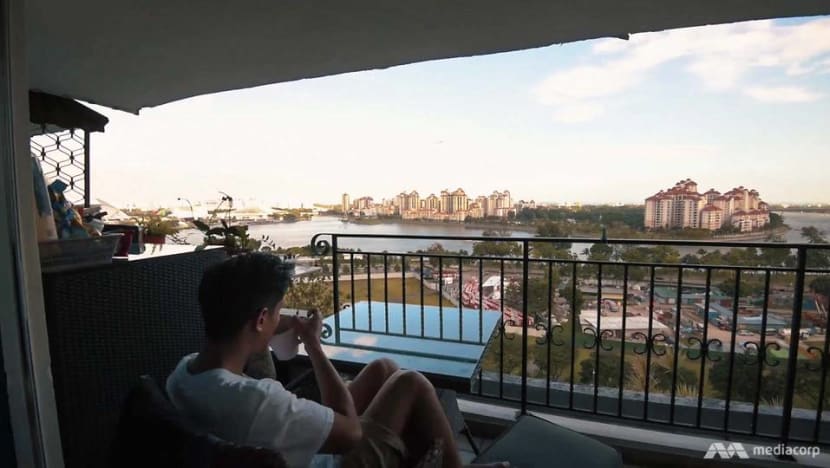
The high-end residential Tanjong Rhu enclave also used to be barren land, he pointed out. “It’s nice to see how this area went from a river to something so metropolitan, with condos, a shopping mall and a stadium. We see changes here constantly,” he said.
The building was also witness to a national tragedy.
When a stretch of Nicoll Highway which was part of the Circle Line worksite collapsed on April 20, 2004, Mr Ang – who was 13 at the time – was at home alone watching cartoons. “It was very, very vivid… All of a sudden, I heard this noise, and it was getting louder and louder to the point where the whole building was shaking.
“I looked out the balcony to see what had happened, and there was this huge bang,” he recounted. "And then I was like, ‘oh my god’. And I saw people just running around. It was horrible."
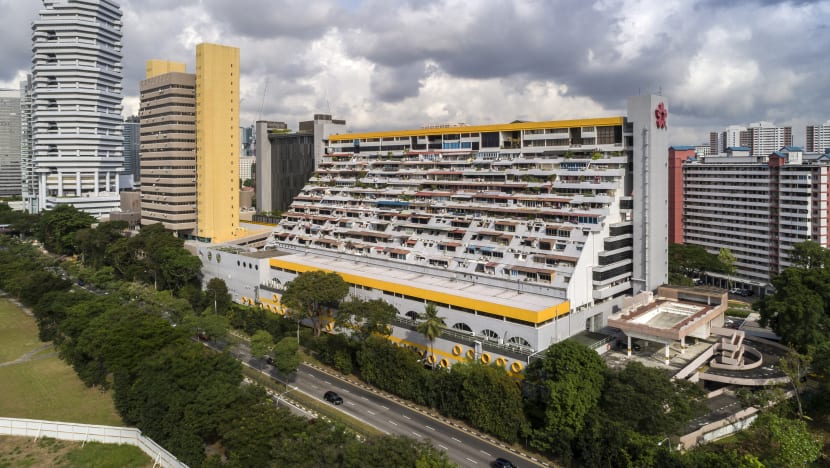
The first thing the panicked boy did was to call his mother, who was working downstairs. Her nonchalant reaction, he recalled, was: “Oh, but the house is fine right?”
“I don’t think she grasped what had happened. People were screaming, it was quite traumatic,” he said. The complex’s occupants were evacuated for a few hours until it was deemed structurally safe. Four people died at the worksite.
3. MANY LIVE, WORK AND PLAY ALL IN THE SAME BUILDING
The building was one of Singapore’s first mixed-use developments, integrating shops, offices and residences under one roof.
“Theoretically, it was designed for people who need never leave the place,” said local architecture photographer Darren Soh. “I mean, they could live here and do everything without ever leaving.”
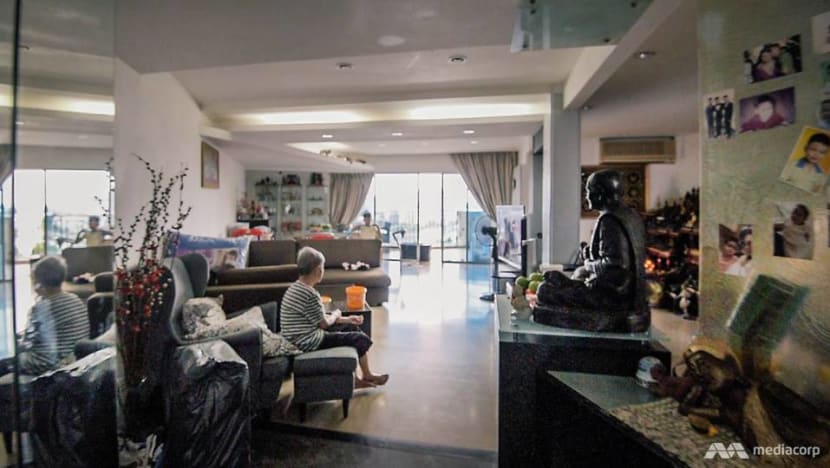
Mr Kalastree, for instance, runs a security and investigation firm from two rented office units. As for Mr Ang, who grew up making the building his playground, his parents own three stores on the retail floors.
Some of the residential units have been rented out to business owners who use them as staff quarters. Mr Leon Loh, manager of Diva Disco on basement one, lives in one of these apartments.
Indeed for the Thai community, the complex has been their home away from Thailand for years, said Mr Soh: “Many of them rent units here and work downstairs. Their children grew up here with their parents working downstairs.”

4. THEY CELEBRATE SONGKRAN (THE WATER FESTIVAL) EVERY YEAR THERE
What this means is that there is a strong sense of community among the occupants of the complex, as many residents and tenants are familiar with each other, said Mr Ang whose mother is Thai.
“I bet you if I go down right now, and if I fell down or something, in one hour my mother would know what happened even if she was not here,” he said.
During the annual Songkran festival in April, residents, shop-owners and customers splash water and engage in water-gun fights with each other on the retail floors.
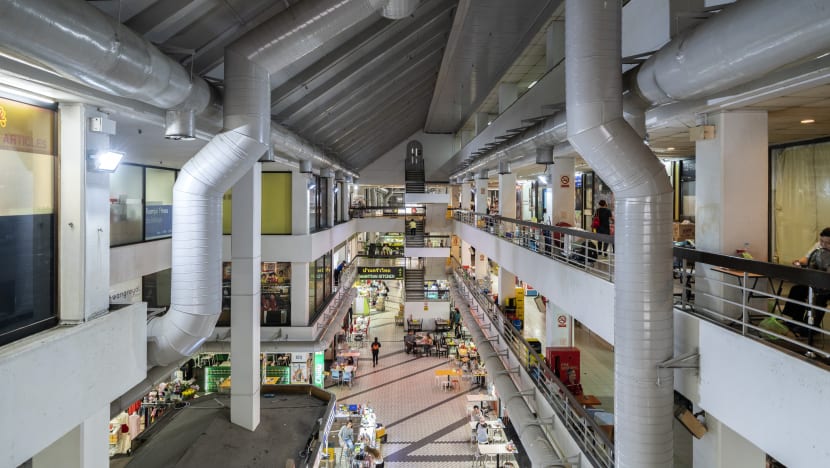
“You get to experience the Thai culture,” said Mr Ang. “I always invite my friends over. Actually that’s the best time to go to the Thai discos because it’s so fun. It stops being the sleazy thing that people say that it is.”
He also remembers that for a couple of years, there used to be a concert too, with Thai traditional dances and bands playing on the first floor.
5. FEWER LOCALS LIVE THERE TODAY
When Mr Kalastree first moved in about 30 years ago, attracted by the building’s location and the seaview, about 90 per cent of the residents were locals, he said.
But over the years, the building has deteriorated due to poor maintenance. It was even famously called a “vertical slum” and a “national disgrace” by a Nominated Member of Parliament in 2006.
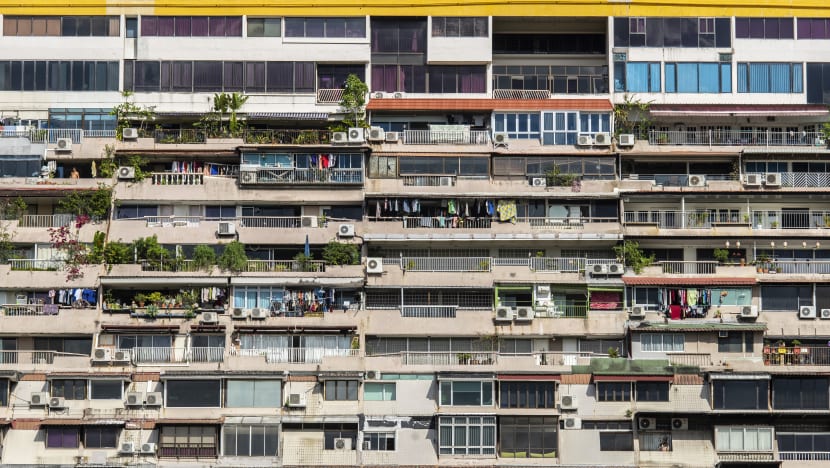
Today, many of the original home owners have passed away, their homes sold or handed down to their children, said Mr Kalastree. Some are leased to Thai businesses like the restaurants or discos, which use them as living quarters for their Thai-national employees.
Others are used by bus drivers employed by the coach companies on the ground floor. Said Mr Ang:
“The drivers would stay overnight, shower and then go down and do another round to Kuala Lumpur, and back and forth. So, it’s more like a halfway building for them.”
WATCH: Paying nostalgic homage to a landmark (11:55)
6. INSTAGRAMMERS TRESPASS TO GET TO THE COURTYARD
The sheltered courtyard on the ninth floor is meant to be a playground for kids who live there to cycle and play badminton.
However, with its bright yellow columns, blue-tiled floor and view of the Beach Road area opposite, it has become a popular Instagrammable spot in recent years, despite the lack of signs leading to the place.
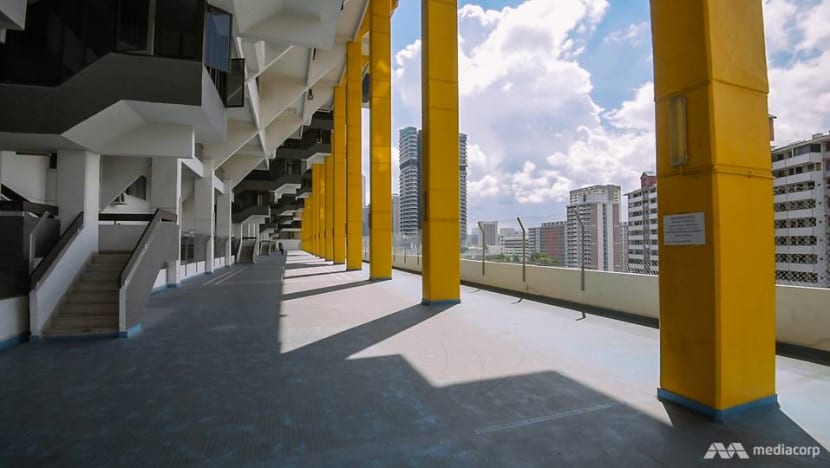
“They only started painting the void deck blue three years ago. Before that it was just concrete white and super dusty,” said Mr Ang. “Then I started seeing people going to the ninth floor, dressed nicely. Apparently, a lot of bloggers started taking pictures there.”
Do proceed at your own risk, though: There’s a private-property sign warning trespassers that the area is strictly for residents and tenants only, and that “any trespasser will be handed over to police”.
7. EVENINGS ARE THE BEST TIME FOR PICTURES
But if you’re aiming to get photos of the complex itself, evening is the best time said Mr Soh. And not just because of beautiful shadows cast by the rays of the setting sun.
One side of the complex, with the intricate reverse of the terrace, faces the setting sun, and pictures are best taken from the HDB blocks along Beach Road across from the complex.
READ: ‘I’m afraid one day it’s going to go’: Saving Singapore’s old buildings one photograph at a time
8. ITS AMULET AND OCCULT SHOPS DRAW LOCAL STUDENTS
Singaporean Chris Tan, who owns one of the numerous Thai amulet shops on the third floor, said some of his clients include students, policemen and even a school principal. About 90 per cent of his customers are Singaporeans.
He sells Thai amulets to those who believe it would help them through difficult times; one costs from as little as S$10 to the tens of thousands. But Mr Tan cautions that they are meant only as a helping “boost”. “If there’s an amulet that can guarantee you wealth in life, there wouldn’t be so many poor people in Thailand,” he said wryly.

Some of the amulet shops also advertise occult services. Perhaps it is that fact, plus the tattoo shops and massage parlours that also populate the third floor, that explains why most visitors don’t venture up there.
“Most people are here to makan or to go to the supermarket,” said Mr Tan.
9. YOU CAN BUY CRISPY CRICKETS AT THE SUPERMARKET
Aside from never-ending rows of Thai sauces and instant noodles, the Thai supermarket on the second level also offers snacks one would be hard-pressed to find elsewhere in Singapore – such as crispy crickets and silkworms at S$2.30 a packet.
But the supermarket’s main draw, especially to Thai nationals, is its wide array of fresh Thai produce – certain varieties of vegetables and types of basil leaves that are found only here, said Thai national Lili Wong, who is married to a Singaporean.

She visits Golden Mile Complex about three times a month to stock up on cooking ingredients, including a particular fish sauce that’s only available here. The 10,000 sq ft supermarket carries over 8,000 types of products.
In bygone years, the supermarket and the complex – which earned the moniker “Little Thailand” – was crowded with Thai construction workers on Sundays, said Thai Supermarket’s operations manager Ronald Teo. “It was just like Chinatown during Chinese New Year, that kind of atmosphere.”
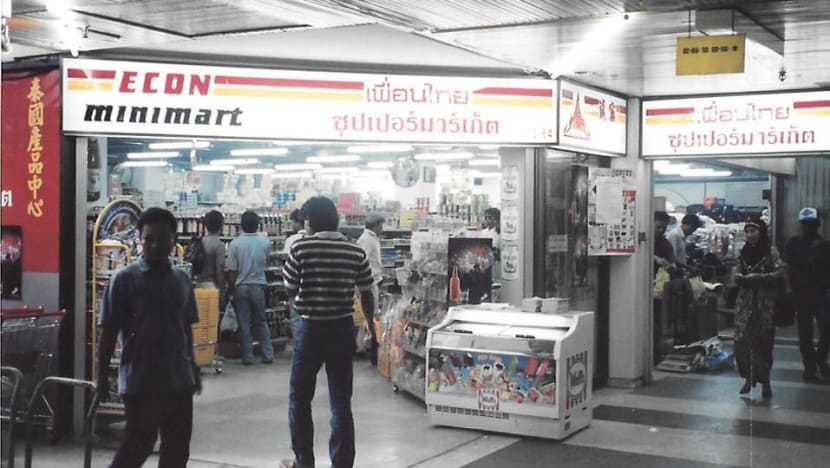
But their numbers have declined, with fewer coming to Singapore to work.
10. THE COMPLEX ALMOST NEVER SLEEPS
It gets busy from about 11am when the retail stores open, and stays abuzz with activity well until the next morning.
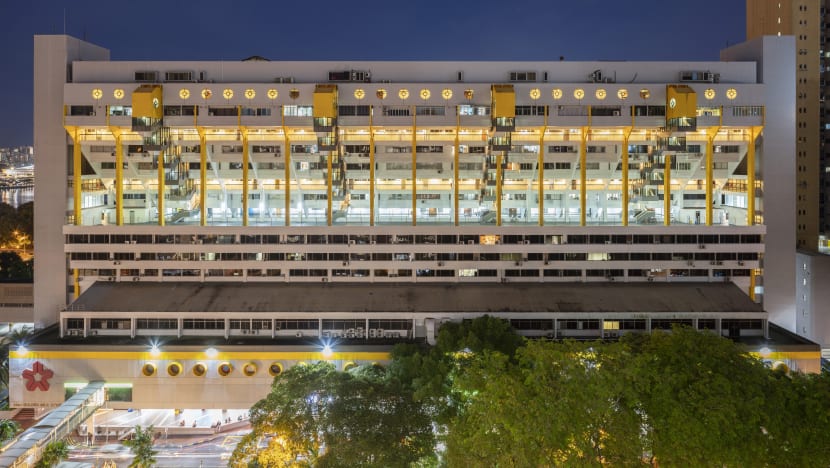
After the retail shops close at night, the Thai discos and clubs come alive – and a different, more shadowy side of Golden Mile Complex emerges with girls in tight shorts and short dresses lingering outside these establishments.
And when the clubs close, patrons may end up at the Mookata restaurants which are open 24/7. The whole complex only becomes quiet in the early morning, and only briefly before the office crowd starts streaming in.
11. YOU CAN BUY FLOWERS FOR THE PRETTY HOSTESSES
At Diva Disco, there is a culture of patrons buying flower garlands and sashes to show appreciation for the attractive girls performing on stage.
The price of these garlands start from S$10, said club manager Mr Loh. The girls typically get a commission from such sales.
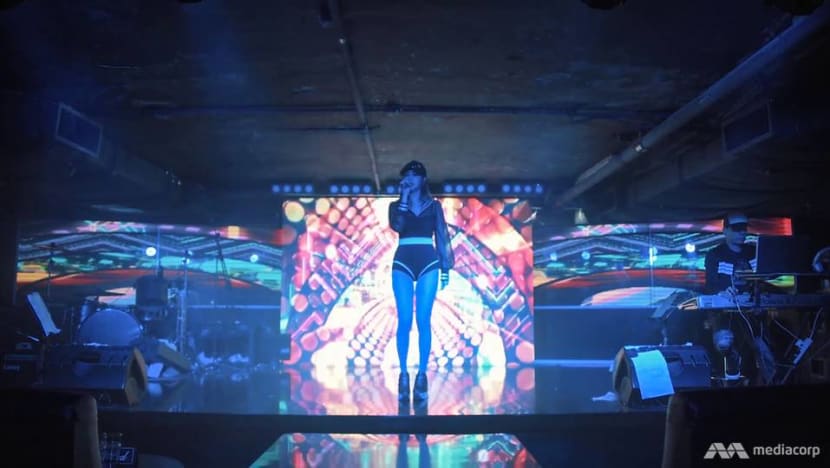
And while they may reward the appreciative patron with a visit to their table, they are not obliged to do so. Mr Loh adds that the girls are strongly discouraged from engaging in any hanky-panky.
The bulk of Diva Disco’s patrons are regulars, mostly Singaporeans.
12. NOT EVERYONE WANTS GOLDEN MILE CONSERVED
The 16-storey complex, designed in the Brutalist style that was in fashion worldwide from the 1950s to the 1970s, was hailed as an “architectural and cultural marvel” by international critics.
Now facing possible demolition if an en bloc sale goes through, the building’s uncertain fate has rallied concerned architects and academics to petition for it to be conserved.
But residents like Mr Ang are not so sure it should be, citing maintenance issues and the age of the building. One of the lifts stopped working months ago (the parts that need replacing are obsolete), and leaking pipes have damaged the walls of Mr Ang’s home.
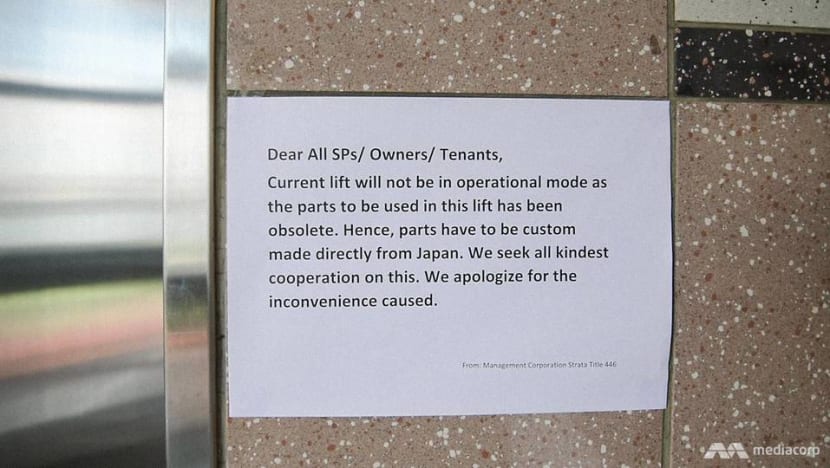
Mr Kalastree said: “The problem is that it’s an old building, and when it rains, the water seeps through some of the walls. The building has water-proofing issues.”
One of the biggest issues is the main sewage pipe which leaks occasionally and stinks up the place, he added. “It’s a big headache. They call the contractors all the time to fix it. But they couldn’t.”
Mr Ang said that if the building were to be conserved, then it should be properly fixed up and maintained. “The moment people find out that it’s going to be gone, all of a sudden it’s a heritage thing.
"But 10 years ago, nobody gave a shit about this place. People would tell you, ‘oh, be wary of this place’,” he said, referring to the building’s reputation as a sleazy haunt.
